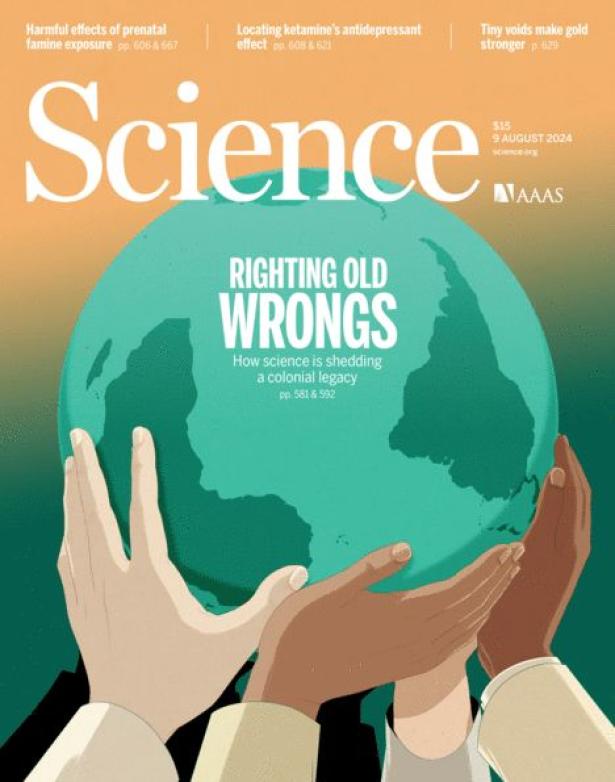Discussions around global equity and justice in science typically emphasize the lack of diversity in the editorial boards of scientific journals, inequities in authorship, “parachute research,” dominance of the English language, or scientific awards garnered predominantly by Global North scientists. These inequities are pervasive and must be redressed. But there is a bigger problem. The legacy of colonialism in scientific research includes an intellectual property system that favors Global North countries and the big corporations they support. This unfairness shows up in who gets access to the fruits of science and raises the question of who science is designed to serve or save.
Consider the COVID-19 pandemic, which gave already known mRNA vaccine technology a global platform. But even as the world celebrated this achievement with a Nobel Prize, the stunning fact remains that COVID-19 vaccines failed to reach millions of people in the Global South in a timely manner, despite the public investments into making these technologies. Global North governments hoarded vaccines and were lobbied by pharmaceutical companies to block a patent waiver that could have enabled Global South countries to make their own mRNA vaccines as a short-term solution during a period of acute need. The commitment to capitalist exploitation that powered much of European colonization persists in science and continues to cost lives. If vaccines had reached the Global South in an equitable and timely manner, half the deaths that occurred might have been averted. Although efforts are being made to bring the technology to Africa, the mRNA platform is largely controlled by the Global North and Big Pharma, undermining vaccine development against a variety of diseases. These same power dynamics and actors also derailed the pandemic accord, which aims to ensure equity.
Recently, the world celebrated the success of lenacapavir as a pre-exposure prophylaxis that was 100% effective in preventing HIV acquisition in cisgender women in South Africa and Uganda. And yet, this breakthrough innovation costs $42,000 a year. Even as the manufacturer pledged to improve access, advocates have raised concerns that this scientific “miracle” might take time to reach the girls and women in Africa who urgently need it. Are Black and brown individuals worthy of clinical trials, but not of access to life-saving treatments?
These examples reflect the importance of not only thinking about who does science and how, but also whether all people have a right to the fruits of science. The United Nations Universal Declaration of Human Rights (1948) stipulates that “everyone has the right…to share in scientific advancements and its benefits.” This declaration must be reaffirmed by all scientists and countries because lives depend on it. For this right to be realized, science must no longer be an enterprise that privileges profits and the elite. Communities most affected by problems must help drive the agenda on what science gets conducted, by whom, how, and who benefits the most from it. Advocates for HIV/AIDS demonstrated that communities can indeed influence the research agenda and push for access. Those who have been historically marginalized, including Black and Indigenous people, people of color, and people in the Global South, must refuse to be seen as passive recipients of charitable and trickle-down science, and demand equitable partnerships.
Fortunately, self-determination and self-sufficiency in advancing science by Global South nations are emerging. India and China produced COVID-19 vaccines (non-mRNA based) that reached other Global South nations during the pandemic. An mRNA-vaccine hub in South Africa, hailed as a “decolonial aspiration,” and the African Vaccine Manufacturing Accelerator (AVMA) are poised to create a sustainable vaccine manufacturing industry in Africa. African scientists collaborated during the COVID-19 pandemic to expand genomic sequencing infrastructure and are now leading the way in defining the landscape of genomics research in the region. Greater South-South solidarity can further amplify such initiatives, by enabling technology transfer, research consortia, and cross-country exchanges.
Scientists must collectively advocate for reforms to how science is funded, who is funded, how governments define intellectual property regimes, and how scientists are incentivized. Funding agencies such as the US Agency for International Development, Wellcome Trust, and Fogarty International Center are starting to directly support Global South partners and affected communities. All funders must do this. And scientists everywhere must be trained to see equity, access, and justice as key values in their work. This is starting to happen in global health and medical research, but must become universal.
Madhukar Pai is a professor and chair of the Department of Global and Public Health, School of Population and Global Health, McGill University, Montreal, Canada. madhukar.pai@mcgill.ca
Seye Abimbola is an associate professor in the School of Public Health, Faculty of Medicine and Health, University of Sydney, Sydney, Australia.seye.abimbola@sydney.edu.au
The formation of AAAS in 1848 marked the emergence of a national scientific community in the United States. While science was part of the American scene from the nation's early days, its practitioners remained few in number and scattered geographically and among disciplines. AAAS was the first permanent organization formed to promote the development of science and engineering at the national level and to represent the interests of all its disciplines.
Participants in AAAS meetings, held in cities across the country, represented a who's who of science. The meetings were covered widely by newspapers, which sometimes reprinted their proceedings verbatim.
However, AAAS's permanence was not preordained and, despite the many contributions it made during its first 50 years, the Association came close to extinction more than once. Ultimately, an alliance with Science magazine, which had failed as a private venture, rejuvenated both the magazine and AAAS.

Quantum Information Theorists Are Shedding Light on Entanglement, One of the Spooky Mysteries of Quantum Mechanics
William Mark Stuckey
The Conversation
Can the theory of relativity inform quantum mechanics?
July 30, 2024


Spread the word